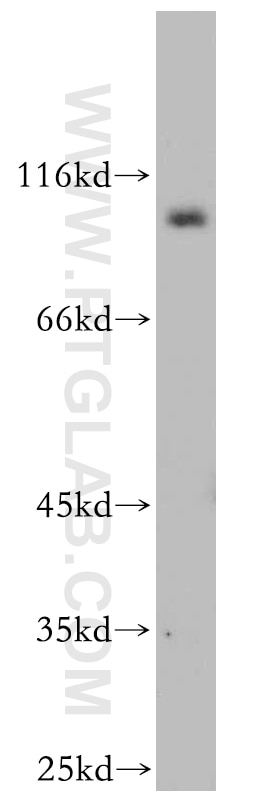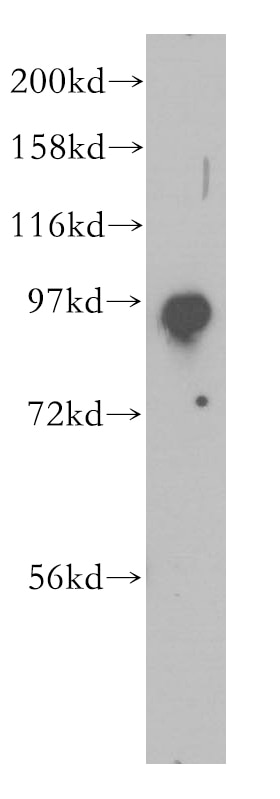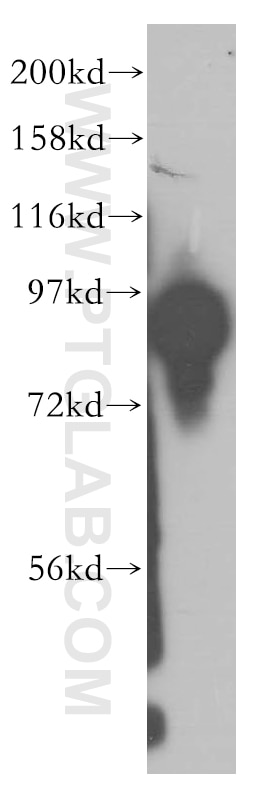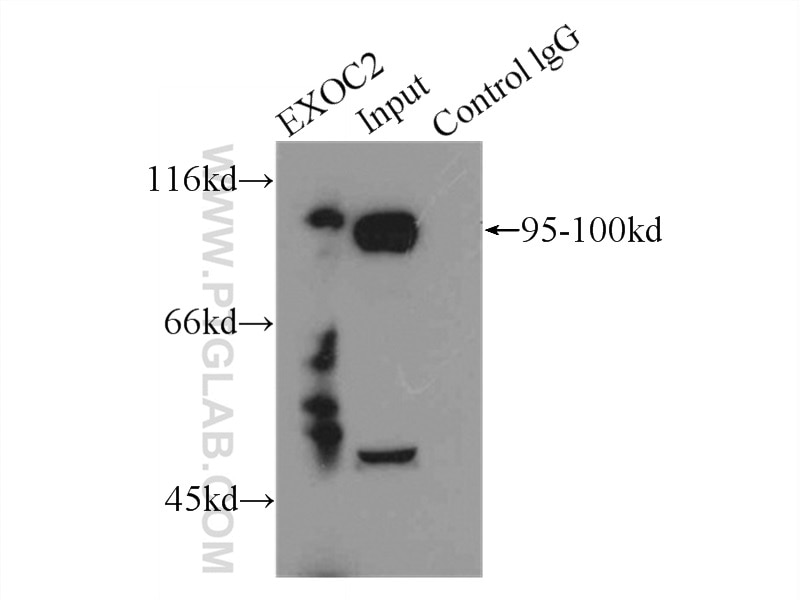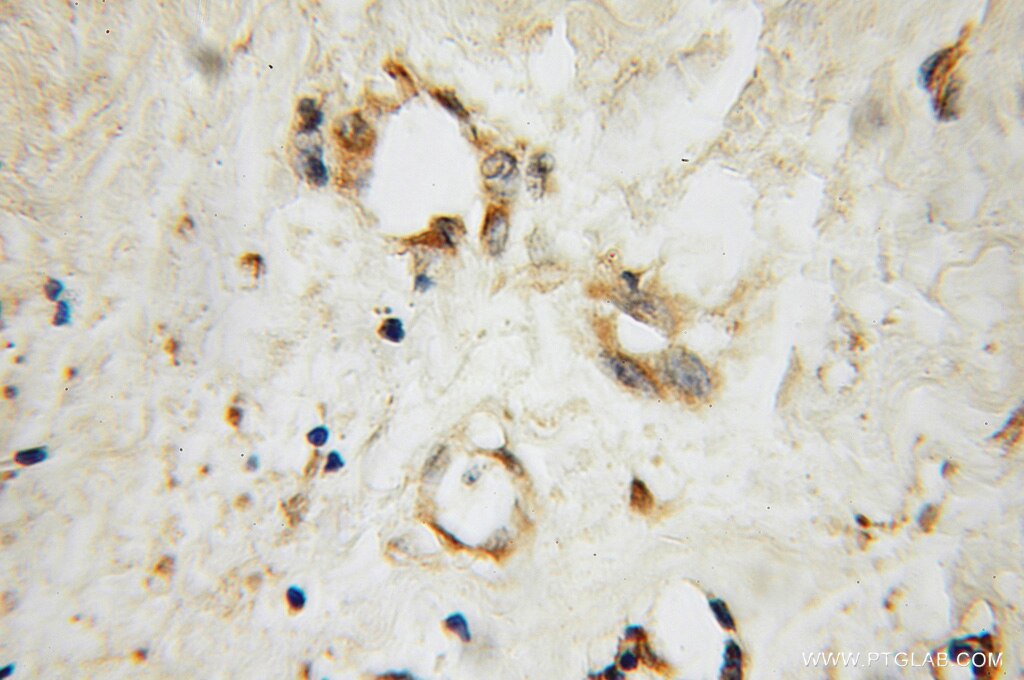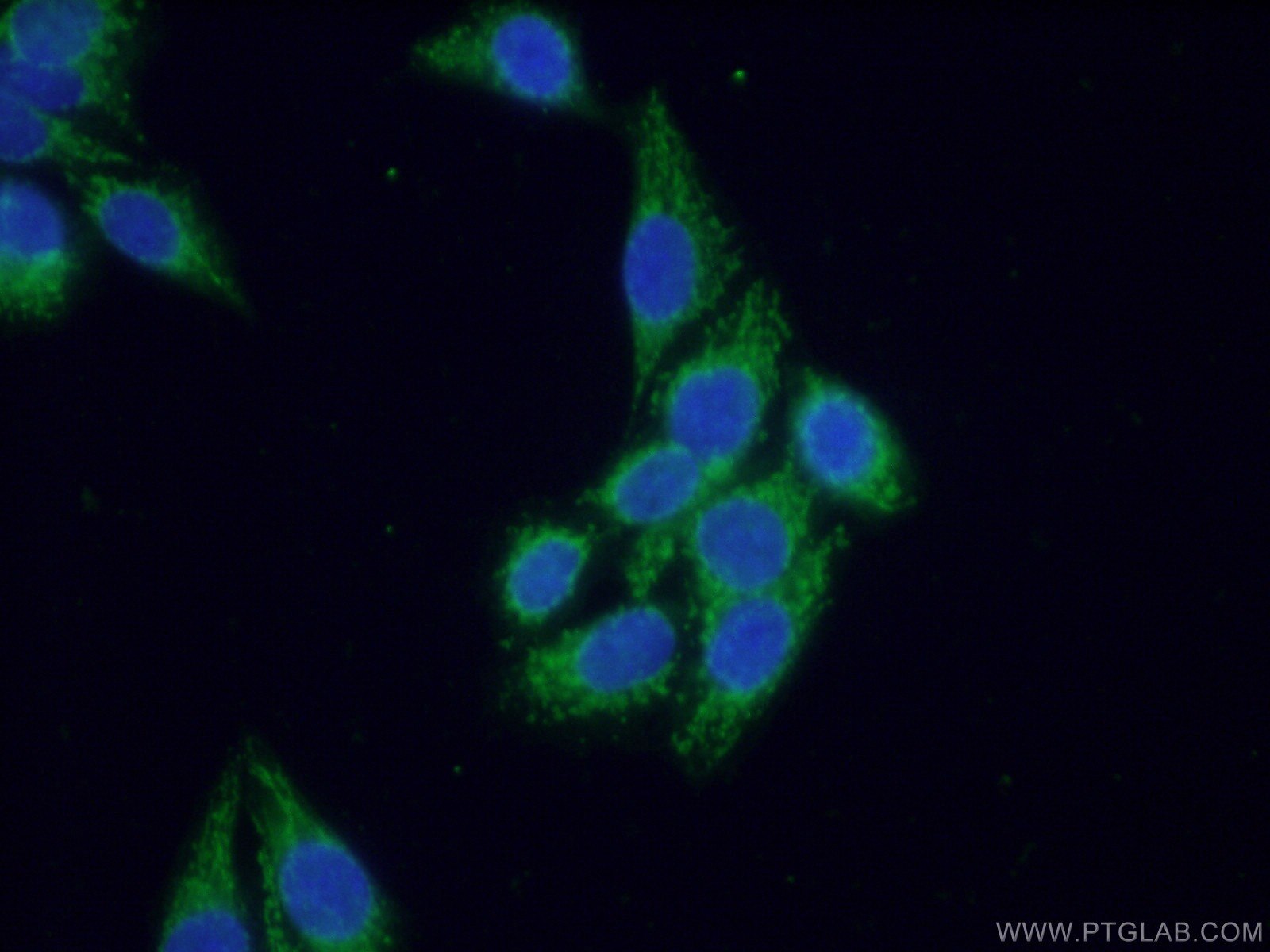Tested Applications
| Positive WB detected in | mouse brain tissue, human brain tissue, human ileum tissue |
| Positive IP detected in | mouse brain tissue |
| Positive IHC detected in | human breast cancer tissue Note: suggested antigen retrieval with TE buffer pH 9.0; (*) Alternatively, antigen retrieval may be performed with citrate buffer pH 6.0 |
| Positive IF/ICC detected in | HeLa cells |
Recommended dilution
| Application | Dilution |
|---|---|
| Western Blot (WB) | WB : 1:500-1:1000 |
| Immunoprecipitation (IP) | IP : 0.5-4.0 ug for 1.0-3.0 mg of total protein lysate |
| Immunohistochemistry (IHC) | IHC : 1:20-1:200 |
| Immunofluorescence (IF)/ICC | IF/ICC : 1:50-1:500 |
| It is recommended that this reagent should be titrated in each testing system to obtain optimal results. | |
| Sample-dependent, Check data in validation data gallery. | |
Published Applications
| KD/KO | See 8 publications below |
| WB | See 19 publications below |
| IHC | See 1 publications below |
| IF | See 7 publications below |
| IP | See 1 publications below |
| CoIP | See 2 publications below |
Product Information
12751-1-AP targets SEC5/EXOC2 in WB, IHC, IF/ICC, IP, CoIP, ELISA applications and shows reactivity with human, mouse, rat samples.
| Tested Reactivity | human, mouse, rat |
| Cited Reactivity | human, mouse, rat |
| Host / Isotype | Rabbit / IgG |
| Class | Polyclonal |
| Type | Antibody |
| Immunogen |
CatNo: Ag3147 Product name: Recombinant human SEC5 protein Source: e coli.-derived, PGEX-4T Tag: GST Domain: 456-806 aa of BC016918 Sequence: TIQDLILDLRVRCVMATLQHTAEEIKRLAEKEDWIVDNEGLTSLPCQFEQCIVCSLQSLKGVLECKPGEASVFQQPKTQEEVCQLSINIMQVFIYCLEQLSTKPDADIDTTHLSVDVSSPDLFGSIHEDFSLTSEQRLLIVLSNCCYLERHTFLNIAEHFEKHNFQGIEKITQVSMASLKELDQRLFENYIELKADPIVGSLEPGIYAGYFDWKDCLPPTGVRNYLKEALVNIIAVHAEVFTISKELVPRVLSKVIEAVSEELSRLMQCVSSFSKNGALQARLEICALRDTVAVYLTPESKSSFKQALEALPQLSSGADKKLLEELLNKFKSSMHLQLTCFQAASSTMMKT Predict reactive species |
| Full Name | exocyst complex component 2 |
| Calculated Molecular Weight | 924 aa, 104 kDa |
| Observed Molecular Weight | 95-100 kDa |
| GenBank Accession Number | BC016918 |
| Gene Symbol | SEC5 |
| Gene ID (NCBI) | 55770 |
| RRID | AB_2262528 |
| Conjugate | Unconjugated |
| Form | Liquid |
| Purification Method | Antigen affinity purification |
| UNIPROT ID | Q96KP1 |
| Storage Buffer | PBS with 0.02% sodium azide and 50% glycerol, pH 7.3. |
| Storage Conditions | Store at -20°C. Stable for one year after shipment. Aliquoting is unnecessary for -20oC storage. 20ul sizes contain 0.1% BSA. |
Background Information
EXOC2 (exocyst complex component 2), also known as SEC5 and SEC5L1, is a component of the exocyst complex, and is required to mediate RalB-dependent survival signals in transformed cells. The exocyst complex, composed of eight evolutionarily conserved subunits (SEC3, SEC5, SEC6, SEC8, SEC10, SEC15, EXO70, and EXO84), is involved in tethering post-Golgi secretory vesicles to specific plasma membrane domains. The gene of EXOC2 maps to chromosome 6p25.3, and encodes a 924-amino acid protein with an experimentally determined molecular mass of 95-100 kDa. EXOC2 mRNA is widely expressed with highest levels in brain and placenta.
Protocols
| Product Specific Protocols | |
|---|---|
| IF protocol for SEC5/EXOC2 antibody 12751-1-AP | Download protocol |
| IHC protocol for SEC5/EXOC2 antibody 12751-1-AP | Download protocol |
| IP protocol for SEC5/EXOC2 antibody 12751-1-AP | Download protocol |
| WB protocol for SEC5/EXOC2 antibody 12751-1-AP | Download protocol |
| Standard Protocols | |
|---|---|
| Click here to view our Standard Protocols |
Publications
| Species | Application | Title |
|---|---|---|
Nat Cell Biol M-Sec promotes membrane nanotube formation by interacting with Ral and the exocyst complex.
| ||
Nat Cell Biol The deubiquitylase USP33 discriminates between RALB functions in autophagy and innate immune response.
| ||
Blood vWF maturation and release are controlled by two regulators of Weibel-Palade body biogenesis: exocyst and BLOC-2. | ||
Sci Signal Phosphorylation of the exocyst protein Exo84 by TBK1 promotes insulin-stimulated GLUT4 trafficking. |

